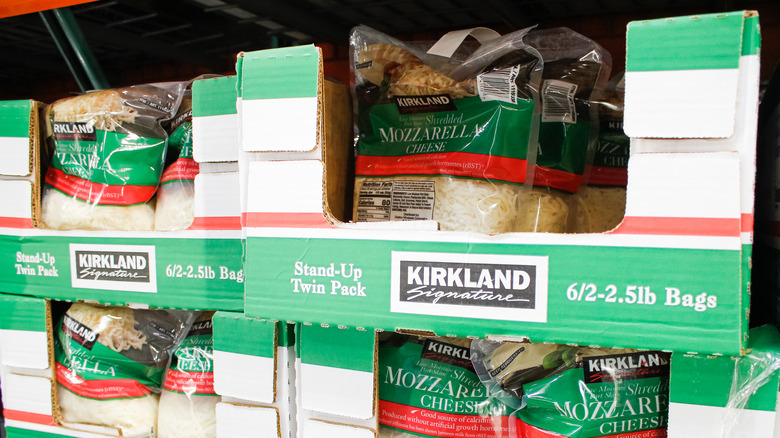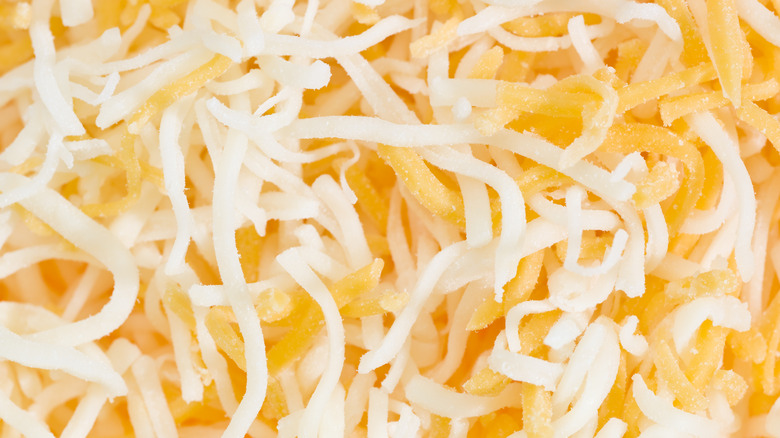The Case For Washing Shredded Cheese
When you grate a block of cheese by hand, the result is a fresher product that tastes and melts better than shredded bagged cheese. Doing it yourself is also a better value because you get more for your money. But sometimes, you might not have a chunk of cheese in the refrigerator or you need shredded cheese right now and opt for bagged cheese instead. If you are planning on melting it, there's one extra step you need to perform. You need to rinse it.
To keep shredded cheese from sticking together and clumping in the package, manufacturers add cellulose as an anti-caking agent. While it is safe to consume — it is a fiber that comes from plants — too much may cause intestinal distress, such as gas and bloating. When it comes to cooking, the same additive that keeps your cheese from clumping will prevent it from melting into a smooth and uniform consistency. To solve this minor dilemma, you just need to rinse your shredded cheese before using it in a recipe.
How to wash shredded cheese
Cellulose doesn't break down in water, so it won't deteriorate like dirt when it gets wet. However, a running stream can encourage it to move along which is why you can rinse your shredded cheese to rid it of cellulose. An easy method is to fill a colander with the desired amount of cheese, then turn on the cold water and let it run over the top. It is important to use a colander instead of a bowl so the cellulose can properly drain away.
While this is a simple process so you might think you can rinse the entire bag of shredded cheese at once, that would not be a wise strategy. Excessive moisture is one of the more common reasons that mold grows on cheese. If you only rinse the amount you need, you won't risk storing damp cheese and encouraging mold growth.

